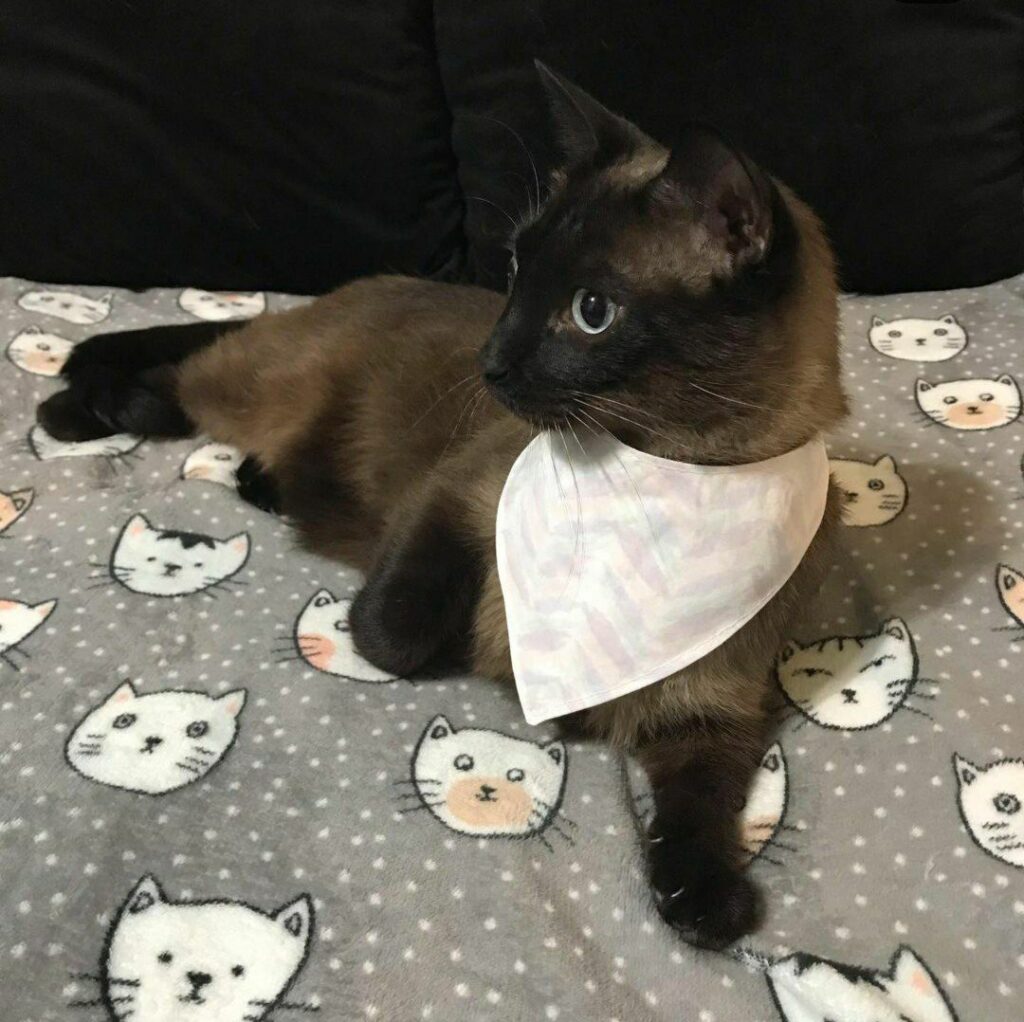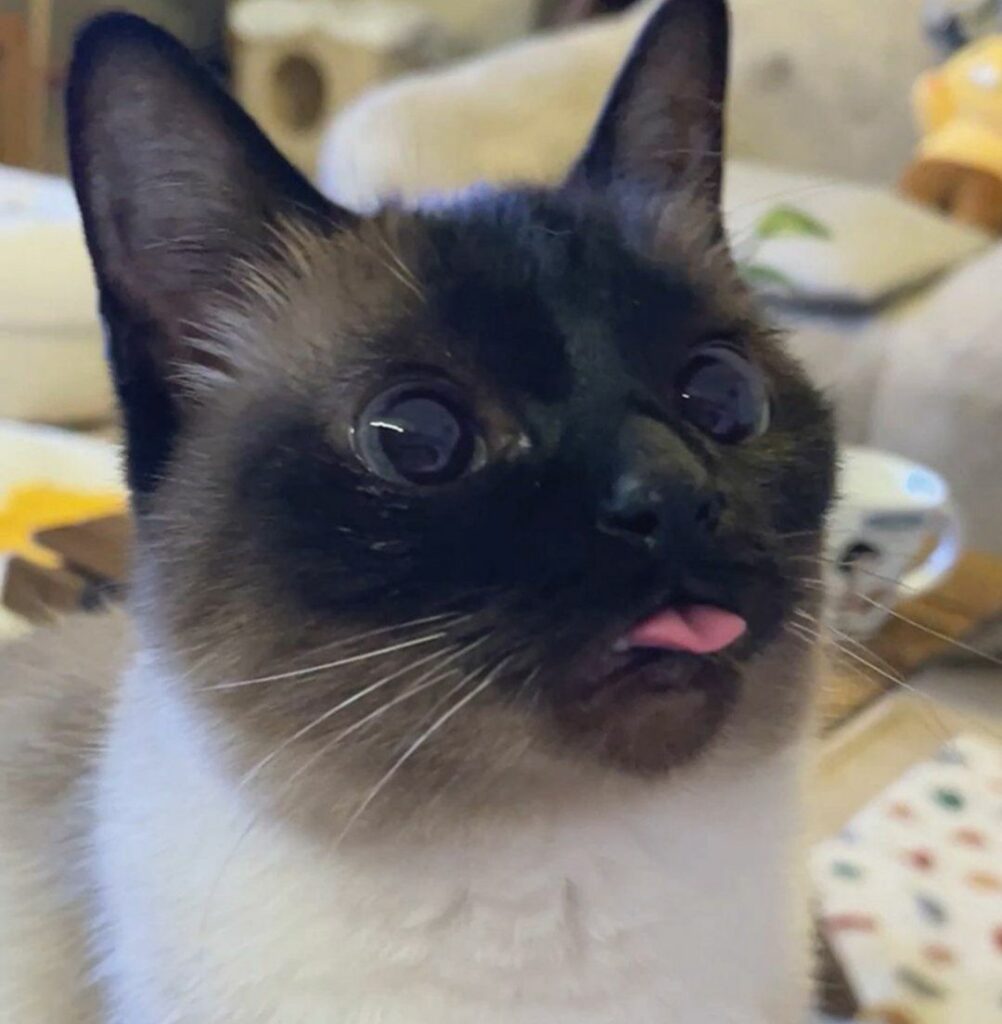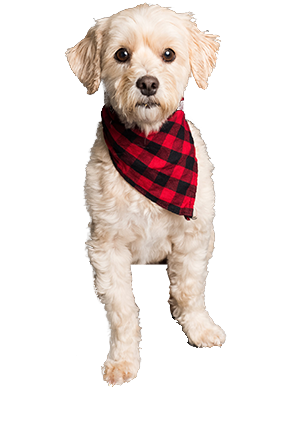The Alluring Siamese: A Vocal Companion with a Rich History
The Siamese cat, with its distinctive pointed markings, bright blue eyes, and captivating voice, has captivated hearts for centuries. Their intelligence, playful personality, and unwavering loyalty have earned them a place as one of the most popular cat breeds worldwide. Delving into the history, characteristics, care requirements, and fascinating facts surrounding the Siamese cat reveals a breed brimming with personality and rich in cultural significance.

A Journey Through Time: The Siamese’s Ancient Origins
The exact origins of the Siamese cat remain shrouded in some mystery. However, historical evidence suggests their tale begins in Southeast Asia, likely in the Kingdom of Siam, now known as Thailand. Early depictions of cats with pointed markings appear in Siamese artwork dating back to the 14th century. A manuscript known as the “Tamra Maew” or “Cat-Poem Book,” written in the 1300s, describes various cat breeds, including one believed to be the Siamese.
These early Siamese cats were highly revered in Siamese culture. They were often kept in royal palaces and temples, believed to bring good luck and even possess magical powers. Some accounts suggest they were even guarded by royal officials and considered sacred companions.
By the late 19th century, Siamese cats began to make their way westward, captivating European and American audiences. The first Siamese cats arrived in England in the 1880s and quickly gained popularity among cat enthusiasts. Breeders began to refine the Siamese standard, emphasizing the pointed coat pattern, wedge-shaped head, and the distinctive blue eyes that are now a hallmark of the breed.
The 20th century saw a surge in the Siamese’s popularity in North America and Europe. Their unique appearance, playful personality, and vocal nature resonated with many cat lovers. The breed standard was further established, and various Siamese cat clubs were formed to promote responsible breeding and maintain the breed’s unique characteristics. Today, the Siamese remains a popular breed, consistently ranking among the top choices for cat owners worldwide.

Unmasking the Siamese: A Look at Their Appearance
The Siamese cat is immediately recognizable by its striking colorpoint markings. Their bodies are typically a pale cream or ivory color, with darker points on the face, ears, legs, and tail. These points can come in a variety of colors, including seal (brown), chocolate, blue, lilac, and red (flame).
Beyond their colorpoints, Siamese cats are known for their elegant and slender build. They have a long, athletic body, long legs, and a long, whipped tail. Their heads are wedge-shaped, with large, triangular ears that add to their alert and inquisitive expression. Perhaps the most captivating feature of the Siamese is their stunning blue eyes, which can range from a pale sapphire to a deep, mesmerizing teal.
Siamese cats come in two main body types: the Traditional or “Applehead” Siamese and the Modern or “Cobby” Siamese. The Traditional Siamese has a rounder head and a more robust body, while the Modern Siamese has a more elongated head and a sleeker physique. Both types are recognized by major cat associations.
A Voice Filled with Personality: The Siamese Meow
One of the most distinctive characteristics of the Siamese cat is their voice. Unlike the meows of other cat breeds, the Siamese meow is often described as loud, high-pitched, and melodic. They are known to be quite vocal cats and will use their voice to express a variety of emotions, from hunger and affection to boredom and frustration. Their vocal nature has earned them nicknames like “talking cats” and “chatty Cathys.”

A Lively Companion: The Siamese Personality
The Siamese personality is as captivating as their appearance. They are known for their intelligence, playfulness, and unwavering loyalty. Siamese cats are highly social creatures who thrive on human interaction. They can form strong bonds with their owners and become devoted companions.
These highly intelligent cats enjoy mental stimulation and can be easily trained with patience and positive reinforcement. They excel at interactive games like fetch and puzzle toys. However, their intelligence can also lead to mischief if they become bored or understimulated. Providing them with enrichment activities and plenty of attention can help prevent destructive behaviors.
One aspect of the Siamese personality that can surprise some owners is their vocal nature. As mentioned earlier, these cats are known for their loud meows and ability to communicate their needs and desires vocally. While some cat owners find this endearing, others may find it overwhelming. Understanding their vocal nature and learning to interpret their meows can help foster a strong bond with your Siamese companion.
Siamese cats are not always lap cats and may prefer to be actively engaged or exploring their environment. However, they do enjoy moments of affection and can be quite cuddly when they choose to be
Caring for Your Vocal Companion: Essential Needs for Siamese Cats
Owning a Siamese cat comes with the responsibility to provide them with the proper care to ensure their health and happiness. Here are some key aspects to consider:
Diet: Siamese cats have a high metabolism due to their active nature. A high-quality cat food formulated for active breeds is essential to provide them with the energy they need. Look for formulas rich in protein and essential nutrients to support their overall health. Regular feeding schedules and monitoring their weight are also crucial.
Exercise and Enrichment: Siamese cats are intelligent and playful, requiring regular opportunities for exercise and mental stimulation. Interactive toys, scratching posts, climbing structures, and puzzle feeders can help them stay engaged and prevent boredom. Consider leash training your Siamese for safe outdoor exploration under supervision.
Grooming: Siamese cats have short, fine fur that is relatively easy to maintain. Weekly brushing with a fine-toothed comb can help remove loose hair and prevent matting. Regular nail trimming and ear cleaning are also important aspects of their grooming routine.

Veterinary Care: Regular veterinary checkups are essential for all cats, including Siamese. Siamese cats can be prone to certain health conditions, such as:
Progressive Retinal Atrophy (PRA): This is a genetic condition that can lead to vision loss in later life. Responsible breeders screen their breeding stock for PRA to minimize the risk of passing it on to kittens.
Amyloidosis: This is a condition where abnormal proteins are deposited in organs, potentially affecting the kidneys, liver, and spleen. Early detection and treatment are crucial.
Respiratory Problems: Siamese cats with shorter noses can be prone to breathing difficulties, especially in hot weather. Provide them with cool environments and avoid strenuous activity during hot days.
Living with a Vocal Cat: Understanding and responding to your Siamese’s vocal cues can strengthen your bond. Learn to differentiate between different meows to address their needs effectively. Ignore attention-seeking meows and reward positive vocalizations to encourage desired behaviors.
Providing a Loving Environment: Siamese cats thrive on companionship and interaction. Dedicate time for play sessions, cuddling (on their terms!), and positive reinforcement training. These intelligent felines appreciate attention and mental stimulation.
Siamese cats can be wonderful companions for families with older children who can understand and respect their boundaries. However, due to their active nature and potential for vocalization, they might not be ideal for households with very young children or those seeking a quiet cat breed.

Beyond the Basics: Fascinating Facts about Siamese Cats
Royal Roots: As mentioned earlier, Siamese cats were once revered in Siamese culture and believed to bring good luck. They were often kept in royal palaces and temples, symbolizing wealth and status.
The “Lucky Cat” of Japan: The Japanese figurine known as the “Maneki-neko” or “beckoning cat” is believed to be modeled after the Siamese cat. This figurine is a popular symbol of good luck and fortune in Japan.
Famous Felines: Siamese cats have graced the silver screen and popular culture. The cartoon cat “Siamese Dream” from Disney’s “Lady and the Tramp” and the mischievous cat “Snowbell” from Stuart Little are both recognizable Siamese characters.
Voice Variations: Siamese cats are known for their unique meows, but there can be variations in their vocalizations. Some Siamese have a quieter chirp, while others have a loud, drawn-out meow.
Point of Variation: While the most common point colors for Siamese cats are seal (brown) and blue, other recognized point colors include chocolate, lilac, and red (flame). These variations add to the diversity and appeal of the breed.
Owning a Siamese cat is a rewarding experience. Their intelligence, playful personalities, and captivating voices make them truly special companions. By understanding their unique needs, providing proper care, and offering them plenty of love and attention, you can ensure your Siamese cat thrives and brings joy to your life for many years to come.

The Victory Of Animal Abusers Over Animal Lovers In Iran
Facebook Twitter Pinterest LinkedIn1. Weaknesses in Legal and Executive Structures: One of the most significant challenges in the field of animal welfare in Iran is

Caring for Senior Dogs: Essential Tips for Keeping Your Aging Pet Healthy and Happy
Facebook Twitter Pinterest LinkedInWhy Senior Dog Care is Different Common Health Issues in Senior Dogs Common Health Problems in Older Dogs As dogs age, just

Effective Weight Management for Dogs: Best Diets and Exercise Tips
Facebook Twitter Pinterest LinkedInWhy Weight Management is Important for Dogs Health Risks of Overweight Dogs Health Risks Associated with Pet Obesity Pet obesity is a




